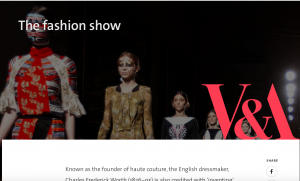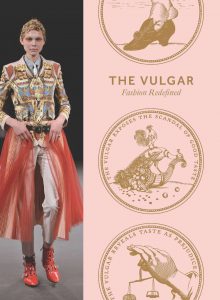 I have been interested in the Barbican’s exhibition of ‘The Vulgar’ ever since I went to see it in January of this year. I found my first source on the Barbican’s exhibition in the Winchester School of Arts library. The book was called ‘Barbican The Vulgar Fashion Redefined’ and was the Barbicans own documentation of the event itself, with references to the inspiration for the show and the best examples of the outstanding concept of vulgarity through fashion. For more information regarding ‘The Vulgar’ exhibition at The Barbican I headed to the Barbican’s online website and found the Gallery’s personal write up of the exhibition, which was an overview of the show, thanking everyone involved in the creative process and all the designers who donated their own work for the huge project. I wanted to find an outside opinion on the exhibition so looked up reviews of the show. I chose a article from The Telegraph on the Barbican’s exhibition which had high praise for the work referring to it as “dazzling and delightfully subversive” [Paragraph 1, Line 2]. My favourite insight into the show that the author, S.Davies, gave was how we can sometimes not perceive our own hypocrisy when it came to personal taste “the show’s relentless probing of the hypocrisies of taste nudge at something deeper about how mankind sees itself” [Paragraph 7, Line 3] For me this gives the exhibition an extra layer of reality which is not obvious until you see the connections between the viewer and the exhibitions vulgarity.
I have been interested in the Barbican’s exhibition of ‘The Vulgar’ ever since I went to see it in January of this year. I found my first source on the Barbican’s exhibition in the Winchester School of Arts library. The book was called ‘Barbican The Vulgar Fashion Redefined’ and was the Barbicans own documentation of the event itself, with references to the inspiration for the show and the best examples of the outstanding concept of vulgarity through fashion. For more information regarding ‘The Vulgar’ exhibition at The Barbican I headed to the Barbican’s online website and found the Gallery’s personal write up of the exhibition, which was an overview of the show, thanking everyone involved in the creative process and all the designers who donated their own work for the huge project. I wanted to find an outside opinion on the exhibition so looked up reviews of the show. I chose a article from The Telegraph on the Barbican’s exhibition which had high praise for the work referring to it as “dazzling and delightfully subversive” [Paragraph 1, Line 2]. My favourite insight into the show that the author, S.Davies, gave was how we can sometimes not perceive our own hypocrisy when it came to personal taste “the show’s relentless probing of the hypocrisies of taste nudge at something deeper about how mankind sees itself” [Paragraph 7, Line 3] For me this gives the exhibition an extra layer of reality which is not obvious until you see the connections between the viewer and the exhibitions vulgarity.
Book – Alison, A.J, Clark, J.C and Phillips, A.P (2016) Barbican The Vulgar Fashion Redefined, London, Koenig Books.
Website – The City of London Corporation (2017) The Vulgar: Fashion Redefined, Available from https://www.barbican.org.uk/the-vulgar-fashion-redefined [Accessed: 25th October]
Newspaper – Davies, S.D (2016) The Barbican’s history of the vulgar is delightfully subversive – review, The Telegraph [Accessed:25th October]

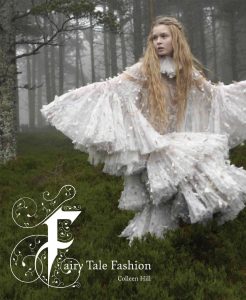
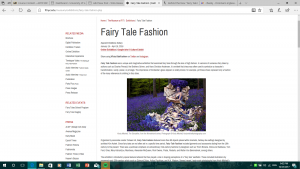


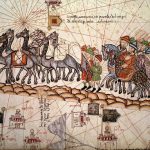
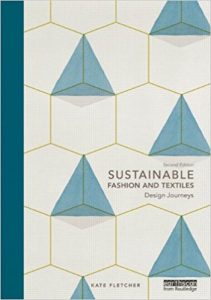

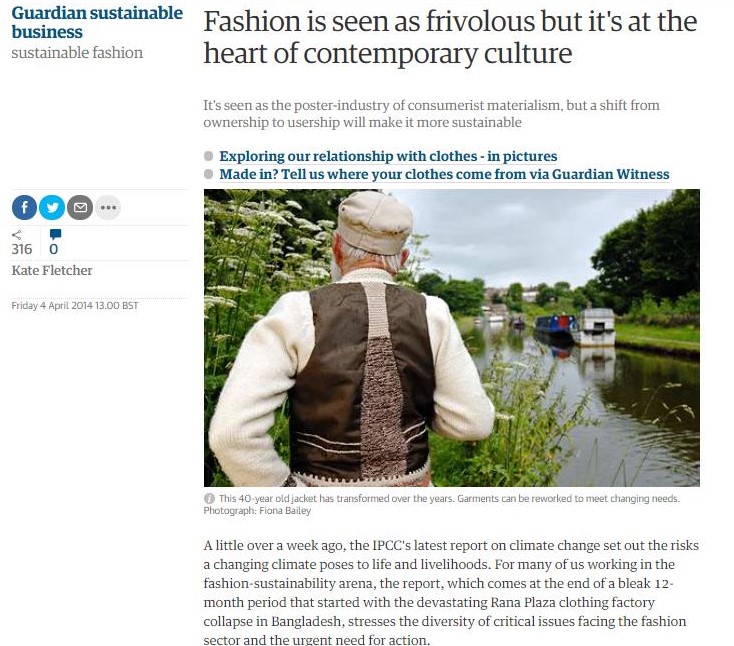
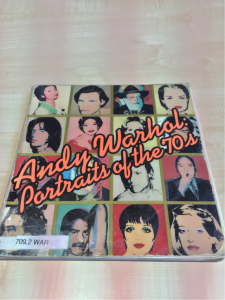
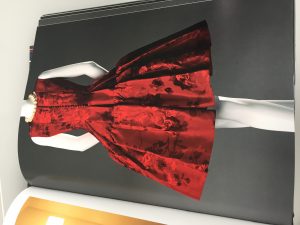
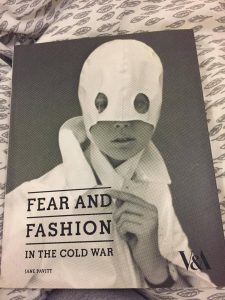

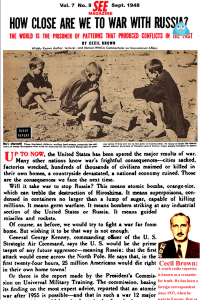
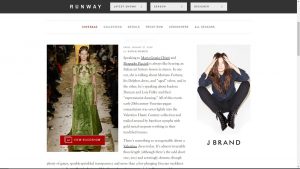
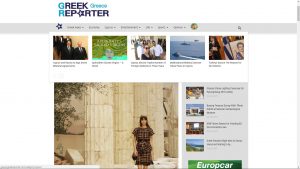
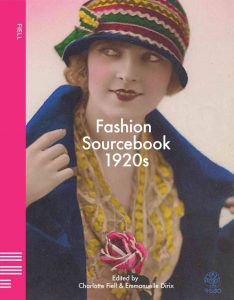
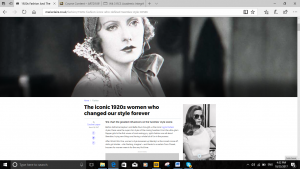

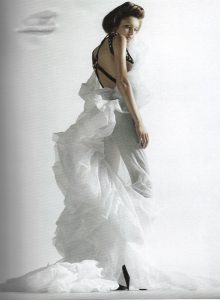 The image I have chosen was from a book ‘House of Viktor & Rolf’ By Caroline Evans and Susannah Frankel. This book shows the collections throughout the years in which designers Viktor Horsting and Rolf Snoering have created. Reading the book about the “Upside Down” collection fascinated me as to how they showcased the couture pieces. They had garments presented that was worn by two models showing one upright and one upside-down, on the catwalk they first showed the correct way and then the other. The whole collection was presented in reverse. Starting the show with the final parade of the models. It was also characterized by satin flowing shapes contrasting to masculine tuxedos. The most important part that really stood out to me was when they presented the show in reverse, Viktor and Rolf breaking boundaries and really standing out as unique designers. [1]
The image I have chosen was from a book ‘House of Viktor & Rolf’ By Caroline Evans and Susannah Frankel. This book shows the collections throughout the years in which designers Viktor Horsting and Rolf Snoering have created. Reading the book about the “Upside Down” collection fascinated me as to how they showcased the couture pieces. They had garments presented that was worn by two models showing one upright and one upside-down, on the catwalk they first showed the correct way and then the other. The whole collection was presented in reverse. Starting the show with the final parade of the models. It was also characterized by satin flowing shapes contrasting to masculine tuxedos. The most important part that really stood out to me was when they presented the show in reverse, Viktor and Rolf breaking boundaries and really standing out as unique designers. [1]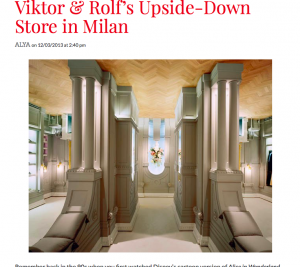 ating back to the ‘Upside Down’ Collection. Viktor and Rolf as designers they always like to take their collection to another level which I’ve always admired them for that. Siebe Tettero was an interior designer who worked on the upside-down store basing it on a traditional Parisian couture salon and had a 19th century French boudoir interior. The colour palette for the design successfully worked to balance out the strong upside-down architecture, balancing the calm colours with the bold shapes. I wanted to research into other artists and designers that have done the similar concept of turning objects upside-down. Although when I researched it not much came up with the result. However, I found a photographer named Martin Tremblay who also worked in the upside-down concept capturing models in a non traditional way of posing, the idea brings the fashion to the foreground which is forcing the viewer to focus on an unusual juxtaposition. [2]
ating back to the ‘Upside Down’ Collection. Viktor and Rolf as designers they always like to take their collection to another level which I’ve always admired them for that. Siebe Tettero was an interior designer who worked on the upside-down store basing it on a traditional Parisian couture salon and had a 19th century French boudoir interior. The colour palette for the design successfully worked to balance out the strong upside-down architecture, balancing the calm colours with the bold shapes. I wanted to research into other artists and designers that have done the similar concept of turning objects upside-down. Although when I researched it not much came up with the result. However, I found a photographer named Martin Tremblay who also worked in the upside-down concept capturing models in a non traditional way of posing, the idea brings the fashion to the foreground which is forcing the viewer to focus on an unusual juxtaposition. [2]